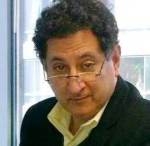Updated
Morocco’s Automobile Sector Set for New Manufacturer; Wind Power Continues to Move Ahead; Another International Company Sets Sights on Morocco; EBRD Ups Support for Morocco; Moroccan Team to Compete in International Social Entrepreneurship Challenge; and Country Launches Training Program for African Officials – Jean R. AbiNader
Jean R. AbiNader, MATIC
October 5, 2017
Fiat has joined other major automobile manufacturers in setting up shop in Morocco; Siemens discloses progress on wind blades production; Spanish media giant selects Morocco as its African platform; and EBRD continues its support for growing small and medium enterprises. Elsewhere, Moroccans will compete to demonstrate green projects and begins training programs for local officials from Africa.
Fiat-Chrysler will establish its Magneti Marelli subsidiary in Morocco to produce automotive components, beginning with shock absorbers. Located in Tangier Automotive City, the facility covers an area approximately 20,000 square meters with optional expansion space. According to the announcement, full capacity will be six million pieces, starting in 2019 with a workforce of 500 by 2025. Overall investment, including government support, will be around $44 million.
For Magneti Marelli, “the creation of an industrial site in Morocco represents an opportunity to further expand its business, responding to the demands and needs of a number of key clients that are making important investments in the area.” The Magneti Marelli production will also benefit the network of the local suppliers. For example, Magneti Marelli supplies Renault and PSA, which have factories in Morocco.
“The shock absorbers are only the first step of our implantation in Morocco. We intend to secure this activity initially before embarking on the diversification of our production,” explains Pietro Gorlier, CEO of Magneti Marelli. “In addition to diversification, it is in our interest to encourage local sourcing,” Gorlier said.
Siemens wind turbines plant will be inaugurated on 11 October 2017.
The investment agreement for the project, signed in March 2016, cost almost $12 million, and the facility will supply the 200MW wind farm in Boujdour and export 85% of its production. The manufacturing of the blades — made of composite materials, are the heaviest in the world — employs some 600 people, slated to increase to 1200 in the long term. In addition, Siemens has established a training center for its facility.
Spanish editing, communications, media, and audiovisual entertainment company Grupo Planeta has chosen Morocco for its foray into Africa. The group, which owns shares in many media and editing houses all over the world, is considered the leader in the editing and media sector in Latin America and Portuguese-speaking countries. Grupo Planeta will start its activities in Africa in the higher education sector; and it plans to add book editing and entertainment projects in the coming months in Morocco.
European Bank for Reconstruction and Development (EBRD) has awarded Morocco a loan of more than $24 million to finance small and medium enterprises (SMEs). The funds will be managed by CaixaBank Succursale au Maroc (CBM) in two tranches. Since local financing remains a challenge for SMEs, EBRD has initiated this effort to strengthen the financial access of these companies, which make up more than 80% of the formal private sector in Morocco. The program will also improve CBM’s balance sheet maturity and upgrade its SME financing capacity.
Alain Pilloux, EBRD Vice President for Banking, said, “We are pleased to partner with CaixaBank, to provide this much-needed funding in local currency. SMEs are the backbone of the Moroccan economy and supporting them will increase employment in the country and contribute to economic growth.”
Hassania School of Public Works’ Enactus Team will participate in the Enactus World Cup in London. It is the world’s largest social entrepreneurship competition and showcases “an international network of student academic and business leaders to showcase entrepreneurial action and shared innovation that intends to transform lives and create a better future,” according to a story in Morocco World News.
There will be more than 300 judges representing leading multinationals from different sectors. The Moroccan team will showcase three green business projects. Mistomar is a circular buried structure of 14 cubic meters, whose architecture and construction materials allow it to function as a cold room designed for preservation of agricultural products for periods of up to six months.
Com’pom aims to take advantage of the apple surplus in the M’semrir region by introducing new products derived from applesauce. Ecodome is a “revolutionary” project that has developed a new construction material made by stacking polypropylene bags filled with a mixture of natural dirt and cement. Using this method will lead to a 50% savings in construction time and 70% savings in energy compared to the traditional methods.
According to the Enactus Morocco announcement, this year’s competition involved 4000 students across Morocco, who developed over 250 projects benefiting more than 195,000 beneficiaries throughout the country. In previous years’ competitions, Morocco has qualified several times for the finals or semi-finals.
Morocco initiates a program to train African local officials as part of its commitment to enable better governance through better training for government workers. The first forum of its kind took place WHEN on the campus of the International University Rabat (IUR) in Sale. Dedicated to the theme, “Human Resources in African Local Governments: The Time to Act … is Now!” it was sponsored by the United Cities and Local Governments of Africa (UCLG-Africa) and its African Local Government Academy (ALGA).
The more than 400 participants from 58 countries, 46 from Africa, included ministers, presidents of local government associations, heads of training institutes, local government senior officials, civil society representatives, experts in local governance, and the general public.
Top themes included the role of human capital in decentralization efforts, networking and peer learning for local government senior staff, and quality education and training for local government administration.
